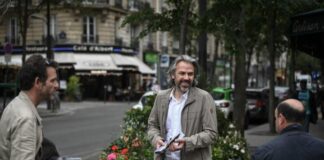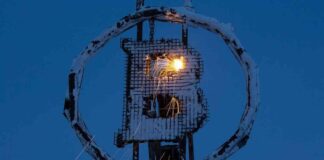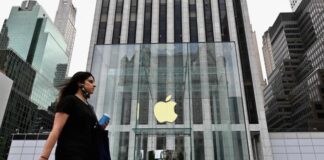When the largest and most powerful particle accelerators, the Large Hadron Collider (LHC), near Geneva, has left for a third phase of experiments, its successor is preparing. And if the LHC is nicknamed “the lord of the rings”, how to qualify its heir? Ten times more powerful, producing a thousand times more collisions, and installed in a tunnel more than three times larger (91 kilometers against 27), the FCC, for Futur Circular Collider, impresses.
In Paris, from May 30 to June 3, a conference took stock of this project, which has not yet been formally decided. The feasibility study is underway and will be made in 2025 to feed a firm decision from the European Organization for Nuclear Research (CERN), which is piloting the project, around 2028. Two years later, construction of the underground ring will begin , between 140 and 230 meters deep, which will be wedged, mainly in France, between the Jura and the Alps with a passage under Lake Geneva and bordering the north of Annecy. The first collisions will be expected in 2045. These will involve electrons and not the heavier protons, as at the LHC. These will arrive around 2070. “It’s the infrastructure of a century!” “, Noted Tor Raubenheimer, member of the FCC project, at the podium of the conference.
Especially since the first studies began ten years ago. “These ideas took a long time to catch on. We have faced headwinds, acknowledge successively Alain Blondel and Patrick Janot, scientific managers of the project, sitting on a sunny bench in the cloister of the Cordeliers during a break from the conference. It was a delight this morning to hear these presentations extolling the merits of the machine. It does all the physics you want and better than other proposals. In less than two minutes of operation, it will produce as much of a particle, dubbed “Z”, as the accelerator the Large Electron-Positron Collider (LEP) in seven years (between 1989 and 1995)…
China in the ranks
But not all obstacles have been overcome. The feasibility study must take stock of the exact location, the design of the installation, the constraints of civil engineering, infrastructure (roads, evacuation of rubble, etc.), administrative (protected areas, authorizations, etc.), environmental and financial. The construction cost is estimated at 10.9 billion Swiss francs (10.6 billion euros), about the cost of the LHC, but CERN only has half of this budget. “Discussions are beginning to seek these funds from the two host countries (France and Switzerland), CERN Member States, non-members or private funds”, explained Fabiola Gianotti, Director General of CERN at the opening of the conference.
“The community is in a delicate situation to convince funders,” warned Eliezer Rabinovici, President of the CERN Council. This machine will make discoveries but we don’t know which ones. It is the unknown. Hard to make headlines with that. To convince, he also pleads for the maintenance of European leadership in this area. “It takes a long time to gain experience and excellence. It’s easier to lose them. Especially since China is in the running with the same concept, only slightly less powerful, and almost the same timing for the feasibility study, the final agreement and the start of construction. “It must be said that this new accelerator is an investment for society over several decades,” said Christophe Grojean, physicist at the DESY laboratory in Germany.
“It’s a wonderful machine. It has enormous potential for discovery,” appreciates Patrick Janot. “Developing this accelerator requires thinking because everything is different, the size, the energy… and we want very high precision,” notes Alain Blondel. There are a lot of problems to solve. It’s awesome ! The latter, during the conference, even intervened to motivate the young researchers: “There will be scientific papers at stake!” “Philosophers, on their bench, the two physicists know that they will not see the outcome of this project. “We plant trees from which we will not reap the fruits,” admits one. Before the other concludes: “But, after all, when we started our career, we also benefited from the work of our predecessors. It’s up to us to give back now. »














